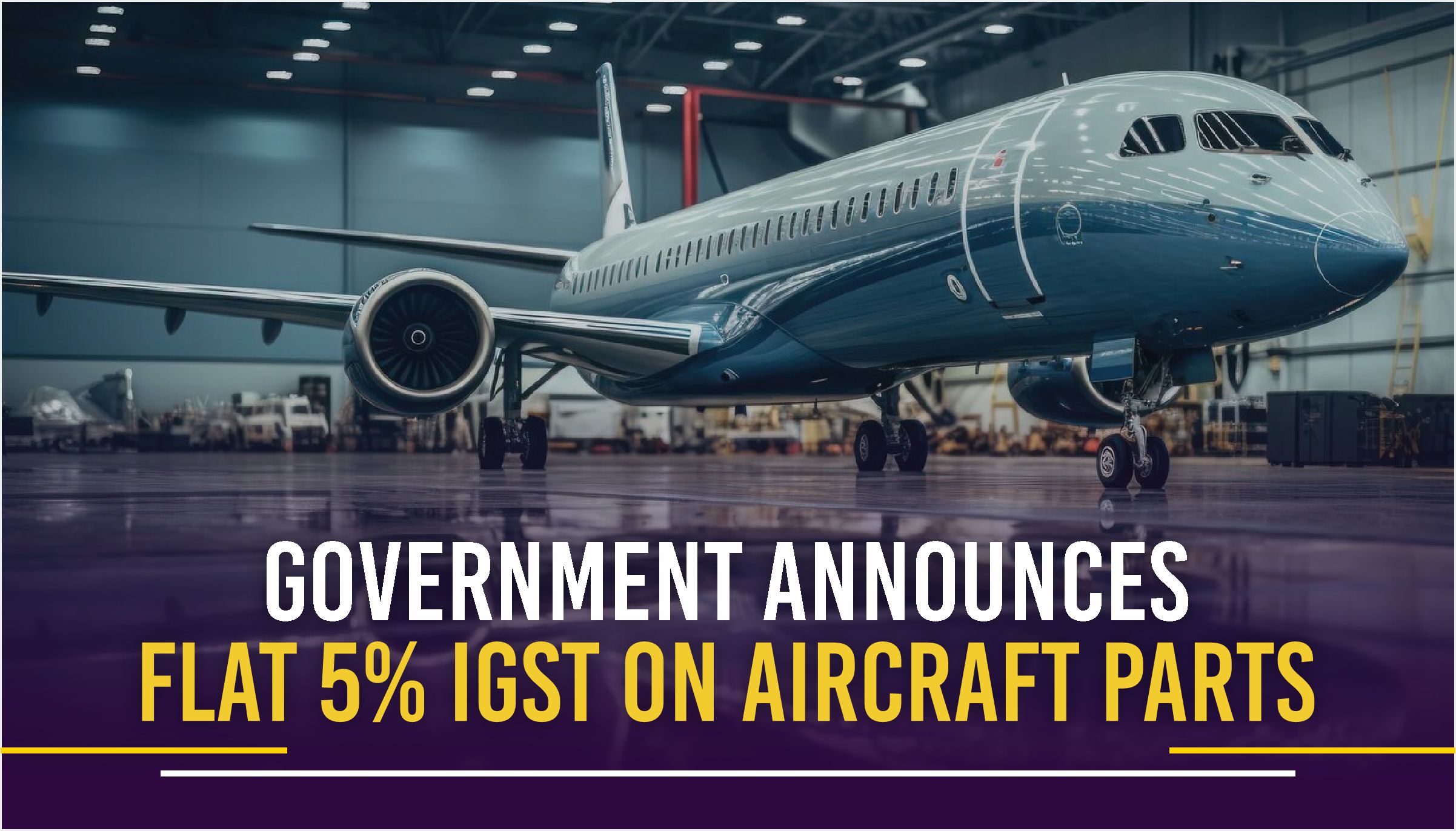Government Announces Flat 5% IGST on Aircraft Parts

On Monday, July 15, the Indian government introduced a significant policy change by establishing a uniform 5% Integrated Goods and Services Tax (IGST) rate on all aircraft and aircraft engine parts. This move is aimed at stimulating the domestic Maintenance, Repair, and Overhaul (MRO) sector, with the broader objective of positioning India as a leading global aviation hub.
Previous Tax Structure
Prior to this announcement, IGST rates on aircraft and engine parts ranged from 5% to 28%, creating a complex and burdensome tax structure. The varying rates led to several challenges, including inverted duty structures and GST accumulation in MRO accounts, which complicated tax credit management and increased operational costs.
GST Council Proposal
During its 53rd meeting on June 22, the GST Council proposed the adoption of a consistent 5% IGST rate on MRO items. This adjustment aims to streamline the taxation process, reduce operational expenses, and make the sector more attractive for investment. The decision, effective immediately, is expected to significantly benefit the aviation industry by eliminating disparities in tax rates and fostering a more straightforward tax regime.
Implications for the Aviation Sector
This marks a significant policy shift aimed at invigorating India’s aviation sector. The move simplifies the previously complex tax structure, thereby reducing operational costs and addressing issues like inverted duty structures and GST accumulation in MRO accounts. By creating a more straightforward and predictable tax regime, the policy is expected to foster growth, attract investment, and enhance efficiency within the MRO sector.
Alignment with Atmanirbhar Bharat Initiative
The policy change aligns with the broader goals of the Atmanirbhar Bharat initiative, which seeks to make India self-reliant and reduce dependency on foreign services. Supported by strong political leadership, the initiative underscores a strategic vision to transform India into a leading global aviation hub. The government is optimistic that this simplified taxation will bolster the competitiveness of the Indian MRO industry, drive innovation, and contribute to sustainable growth, positioning the country as a significant player in the international aviation market.
Future Outlook for the Indian MRO Industry
The government aspires to elevate India into a premier aviation center, with the Indian MRO industry estimated to reach USD 4 billion by 2030. This policy change is crucial for building a solid ecosystem for MRO services, driving innovation, and ensuring sustainable growth.
The Ministry of Civil Aviation is optimistic that this initiative will significantly bolster the competitiveness of India’s MRO sector, fostering innovation and efficiency to cultivate a robust and effective aviation industry. The uniform 5% IGST rate marks a pivotal step forward in the government’s strategy to enhance the global standing of India’s aviation sector.
